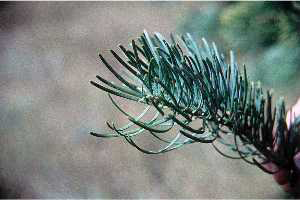White fir is one of the conifers commonly used as a Christmas tree during the winter holiday.
Photo Credit: © USDA-NRCS Plants Database/Herman, D.E., et al. 1996. North Dakota tree handbook. USDA NRCS ND State Soil Conservation Committee; NDSU Extension and Western Area Power Administration, Bismarck.
Abies concolor
Common Name: white fir
Other Common Names: colorado fir, concolor fir, Oyamel de California, silver fir, white balsam
Plant Functional Group: Evergreen conifer
Class > Order > Family: Pinopsida > Pinales > Pinaceae
